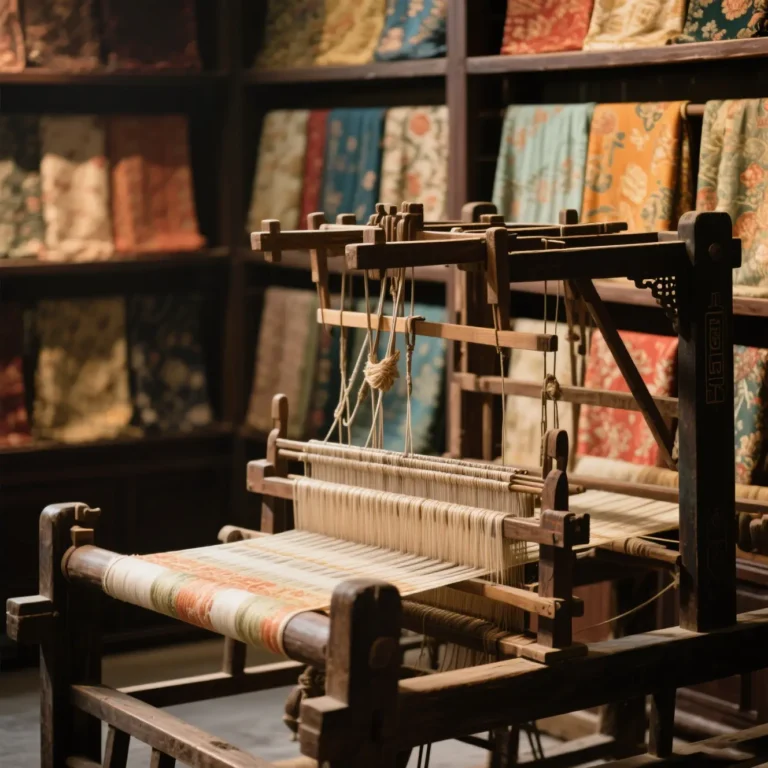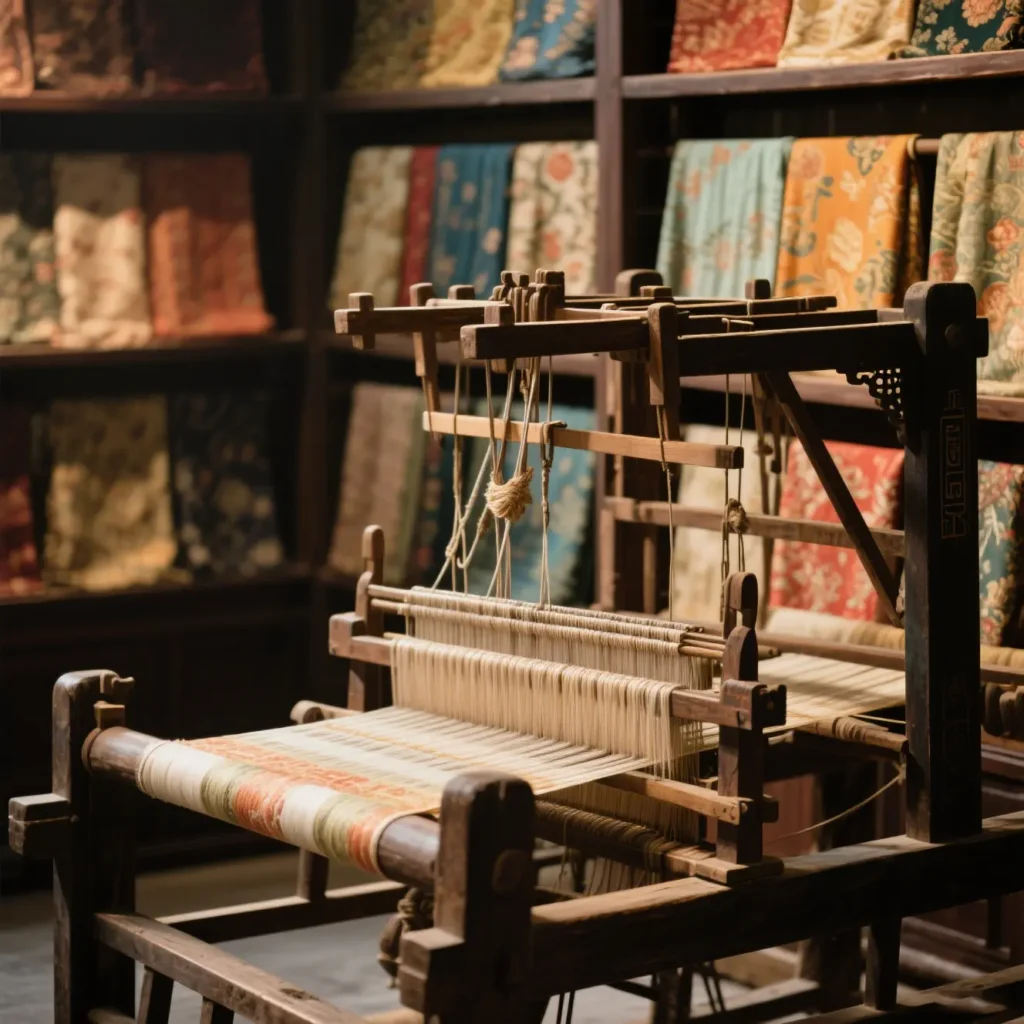Physical Address
304 North Cardinal St.
Dorchester Center, MA 02124
Physical Address
304 North Cardinal St.
Dorchester Center, MA 02124

China, the cradle of silk fabric, has a history of silk production that dates back to the mists of time. Archaeological findings have unearthed the remnants of domestic silk in the Liangzhu cultural site in Zhejiang and the Yangshao cultural site in Henan. These discoveries serve as tangible evidence that approximately five thousand years ago, as society evolved and the demands of daily life grew more complex, the Chinese people had already mastered the fundamental techniques of sericulture, including mulberry cultivation, silkworm rearing, and silk extraction. This marked the humble beginnings of an industry that would come to define China’s cultural and economic landscape.

In the early stages of silk production, the middle and lower reaches of the Yellow River, the Yangtze River Delta, the Sichuan – Shu Basin, and southern China emerged as the primary regions for silk cultivation. The fertile soils and favorable climates of these areas provided an ideal environment for the growth of mulberry trees, the primary food source for silkworms. Among these regions, the middle and lower reaches of the Yellow River took the lead in silk production. The well – developed agricultural systems and the presence of a skilled labor force in this area contributed to the rapid expansion of the silk industry. The techniques for silk production were refined, and the quality of silk fabrics improved significantly, making the region a dominant force in the early silk market.
However, the course of history is often shaped by unforeseen events. The Wei and Jin Dynasties brought a period of political upheaval and frequent warfare in the north. As a result, a large number of people migrated southward in search of peace and stability. This mass migration had a profound impact on the economic landscape of China. The south, with its relatively stable political environment, welcomed the influx of migrants and their skills. The silk industry, which had been thriving in the north, gradually found a new home in the south. The transfer of the silk industry to the south was further accelerated during the late Tang Dynasty. By the time of the Song Dynasty, the transformation was almost complete, with the Jiangnan area emerging as the new epicenter of silk production in the country. The region’s abundant natural resources, combined with the skills brought by the migrants, led to the establishment of a prosperous silk industry. During the Ming and Qing dynasties, the southern part of the Jiangnan area witnessed the rise of numerous prosperous silk – producing towns. These towns specialized in different aspects of silk production, from sericulture to silk weaving and dyeing. The division of labor and the exchange of ideas in these towns further propelled the growth of the silk industry, making it a cornerstone of the local and national economies.
Throughout Chinese history, the cultivation of mulberry trees has been a subject of great importance. The success of various cultivation methods has been crucial for the development of the silk industry. One of the most significant advancements was the emergence of grafted mulberry trees. This innovative technique allowed for the production of higher – quality mulberry leaves, which in turn led to the growth of healthier silkworms and the production of better – quality silk. Grafted mulberry trees were more resistant to diseases and pests, and they produced leaves that were richer in nutrients. This not only increased the yield of mulberry leaves but also improved the quality of silk, making it more lustrous and durable.
The evolution of silk reeling and weaving machines is a testament to the ingenuity of the Chinese people. Initially, silk reeling was a labor – intensive process that relied on manual labor. However, over time, technological advancements led to the development of foot – operated reeling cars. These cars increased the efficiency of the reeling process, allowing for a greater quantity of silk to be produced in a shorter period. Similarly, the silk loom also underwent a series of transformations. From simple hand – operated looms, it evolved to include heddles and foot – operated mechanisms. The invention of the beam heddle jacquard machine was a game – changer in the silk industry. This machine enabled the creation of intricate patterns and designs on silk fabrics, opening up new possibilities for artistic expression. The use of template printing instead of manual drawing also significantly improved the efficiency of the silk – printing process, making it possible to produce large quantities of printed silk fabrics with consistent quality.
Silk, with its exquisite texture and elegant appearance, has always held a special place in Chinese culture. Magnificent silk costumes have long been the hallmark of the luxurious lifestyles of the nobility and royalty. The intricate designs, fine craftsmanship, and high cost of production made silk garments a symbol of wealth and social status. In the imperial courts, silk robes were not only a form of clothing but also a means of displaying power and prestige. The emperors and empresses would wear silk robes adorned with precious gemstones and elaborate embroidery, reflecting their exalted positions. The nobles and high – ranking officials also vied to wear the most luxurious silk garments, using them as a way to distinguish themselves from the common people.
The demand for high – quality silk by the nobility and royalty led to the development of official weaving workshops. These workshops were staffed by highly skilled artisans who were dedicated to producing the finest silk fabrics and garments. The official weaving industry not only catered to the needs of the imperial court but also set the standards for silk production in the country. The artisans in these workshops experimented with new techniques and designs, pushing the boundaries of what was possible in silk production. The result was the creation of a wide range of high – end silk products, including brocades, satins, and embroidered silk fabrics. These products were not only highly valued in China but also became highly sought – after items in international trade.
As early as around the 5th century BC, Chinese silk began to make its way beyond the borders of China. Along with its production experience and technology, silk was exported to neighboring countries and regions. This early trade in silk laid the foundation for the establishment of the famous “Silk Road.” The Silk Road, which connected Asia and Europe, became a vital artery for the exchange of goods, ideas, and cultures. Chinese silk, with its unique qualities, quickly became one of the most important commodities traded along this route. The demand for silk in Europe was insatiable, and it became a symbol of luxury and sophistication. Merchants from all over the world flocked to China to purchase silk, which was then transported across vast deserts and mountains to reach the markets of Europe. In addition to the overland Silk Road, the “Maritime Silk Road” also played a crucial role in the international spread of Chinese silk. This route connected China with Southeast Asia, Europe, Africa, and Latin America. Chinese silk was shipped by sea, reaching far – flung destinations and opening up new markets for Chinese goods. The Maritime Silk Road not only facilitated the trade in silk but also promoted cultural exchange between different regions. It allowed for the spread of Chinese culture, technology, and ideas to other parts of the world, while also bringing back new influences from abroad.
The history of silk fabric in China is a rich tapestry woven with threads of innovation, cultural significance, and international trade. From its humble beginnings in the Neolithic period to its global spread, silk has played a pivotal role in shaping China’s history and culture. The technological advancements in silk production, the cultural significance attached to it, and its international trade have all contributed to its enduring legacy. Today, silk continues to be a symbol of luxury and elegance, and the techniques developed by the Chinese over thousands of years are still admired and emulated around the world. The story of silk is a testament to the creativity and resilience of the Chinese people and their ability to create something truly extraordinary from the simplest of materials.